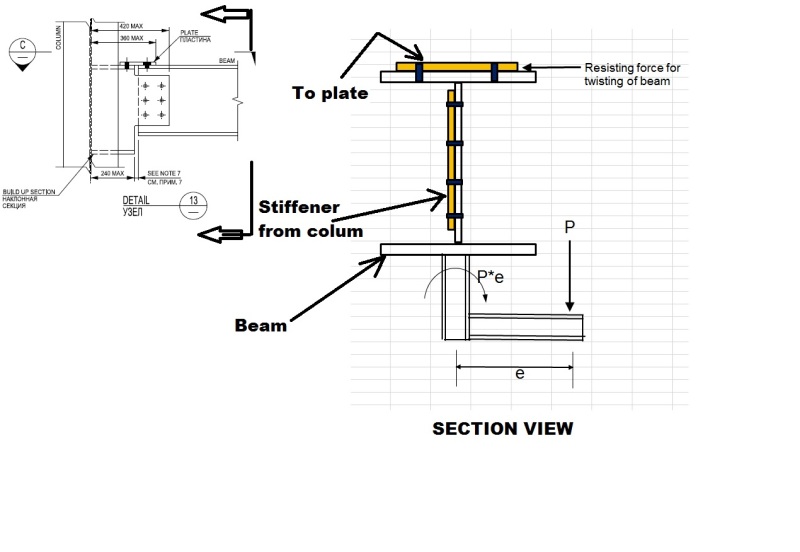allimuthug
Civil/Environmental
Hi
I have a shear tab connection of HE400 A (European Section) longitudinal beam with HE300 A column as shown below.

The cross looks like this

When some pipe supports are supported on the longitudinal beam, as shown the picture above shall cause torsion on the beam.
The beam is restrained by the bolts on the web and top flange. Please explain me how to find the torsional capacity on the beam.
I have a shear tab connection of HE400 A (European Section) longitudinal beam with HE300 A column as shown below.

The cross looks like this

When some pipe supports are supported on the longitudinal beam, as shown the picture above shall cause torsion on the beam.
The beam is restrained by the bolts on the web and top flange. Please explain me how to find the torsional capacity on the beam.
